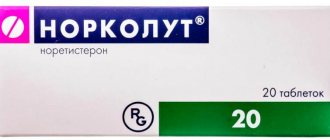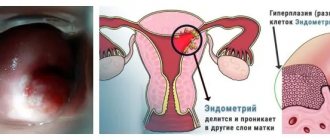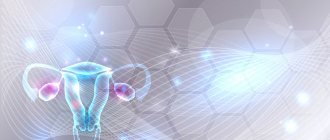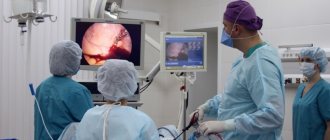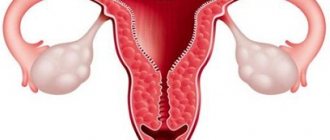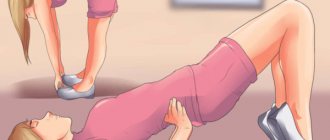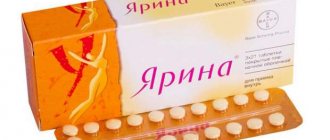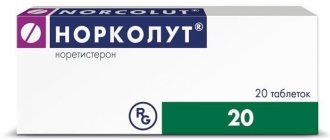≡ Home → Endometrium → Endometriosis →
Norkolut is a hormonal drug from the group of gestagens. In gynecological practice, it is used for the treatment of benign neoplasms - foci of endometriosis, uterine fibroids, ovarian cysts. It suppresses tissue growth, normalizes the menstrual cycle and helps restore reproductive function.
Norkolut is not the drug of choice for endometriosis. Clinical trials show that the hormonal drug is not very well tolerated and does not always give the desired effect. Its use is limited - there are other drugs that give better results with fewer side effects. Further in the article we will find out how and when Norkolut is prescribed and why its use may be justified.
Norkolut: instructions for use, reviews from women
Norkolut belongs to the group of hormonal drugs and has a wide spectrum of action. Its peculiarity is its ability to cause or suspend processes in a woman’s body. For example, using different dosage regimens, you can induce menstruation or delay its onset, use it as a contraceptive, or use it as a prophylaxis when there is a threat of miscarriage. For women over 40 years of age, Norkolut during menopause is prescribed to stabilize hormonal levels.
Analogues of the drug
The same composition (5 mg of norethisterone) contains the drug Primolut-Nor. In the treatment of endometriosis and uterine fibroids, other hormonal drugs are used that suppress ovulation and help restore the condition of the internal uterine layer. One of them is Duphaston for endometriosis, it contains dydrogesterone, an analogue of natural progesterone.
Oral contraceptives with similar effects are divided into several groups:
- monophasic - Janine, Logest, Rigevidon;
- two- and three-phase - Triquilar, Anteovin, Triziston;
- monohormonal gestagens – Microlut.
Often, in the treatment of endometriosis, tablets such as Qlaira, Visanne, Silhouette for endometriosis, Janine, Logest, Diane-35 are prescribed. It is impossible to say which one is better suited; it all depends on the degree of neglect of the pathology, the hormonal status of the patient and existing concomitant diseases.
There are many analogues
Instructions for use
The use of any medicine requires a strict dosage, which can only be determined by a doctor. This is especially true for hormonal drugs. The appointment occurs only after the examination and depends on the planned purpose.
Something to remember! Different regimens for taking the drug Norkolut lead to different results, even the opposite. Following the instructions will minimize side effects and increase the effectiveness of the medication.
Norkolut is produced by the Hungarian company Gedeon Richter, which has been working in the pharmaceutical market for more than a century. Older women are well aware of their contraceptives Tri-Regol and Rigevidon. Subsequently, new drugs were developed that also reduce the risk of developing inflammatory processes, normalize hormonal imbalances, and reduce the risk of malignant tumors of the uterus and breast cancer.
Norkolut is used in gynecology to normalize the menstrual cycle, relieve PMS symptoms, treat mastopathy and mastodynia, fibroids, and endometriosis. It is often used during menopause in women over 40 years of age as hormone replacement therapy.
Analogues of the drug
Like any synthetic analogue of sex hormones, Norkolut can provoke side effects from the gastrointestinal tract, endocrine system, and hematopoietic organs.
Among the most common unpleasant symptoms caused by taking the drug in women after 40 years of age are:
- discomfort in the epigastric region;
- nausea and vomiting;
- headache;
- increased fatigue, apathy;
- feeling of fullness and tingling in the chest;
- increased appetite;
- weight gain;
- swelling of the face and limbs;
- bleeding of varying intensity.
Long-term use increases the risk of thrombosis.
Restrictions on the use of the drug are:
- acute and chronic diseases of the liver and kidneys;
- endocrine diseases (hypothyroidism, diabetes, obesity);
- diseases of the circulatory system;
- bleeding of unknown etiology;
- hypertension;
- neuropsychiatric diseases;
- convulsions.
If malignant tumors appear in the reproductive organs, mammary glands and other parts of the body, taking the drug is absolutely contraindicated. Particular attention should be paid to women with allergies to avoid an allergic reaction to the action of the synthetic hormone.
Medicines used for diabetes and blood diseases require special precautions when used in combination with Norkolut.
Prematurity, menstrual irregularities.
According to official recommendations and descriptions, Norkolut is not used for medication, since the product does not have all the necessary properties to ensure the ideal course of this process. However, the medication is still used, but only in the first 72 hours after sexual intercourse or as an adjuvant to eliminate the side effects of abortion on the body (lactation).
It is also actively recommended to women as a product, since its main active ingredient, norethisterone, in combination with estrogen-containing agents, can inhibit the ovulation process and prevent pregnancy.
In addition, not many people know how and for what purposes Norkolut can still be taken.
Today there are several analogues of Norkolut. Their main similarity lies in the same therapeutic effect on the body, which is achieved thanks to the hormonal components of the drug. The most common ones include the following:
- "Linestrenol";
- "Norethisterone";
- "Orgametril";
- “Primolut-nor”;
- "Pregnin."
Important! The use of Norkolut may cause heavier and longer-lasting discharge during menstruation. This is not a pathology, so if this situation arises, you should not worry about your own health.
Norkolut tablets are most often prescribed for conditions that are not caused by pregnancy. The drug is taken according to the regimen prescribed by the gynecologist. The main active component of the drug is norethisterone, which is a progestogen. An insufficient amount of this substance in the female body causes delayed menstruation and infertility.
Once in the body, the drug acts by replenishing the amount of gestagen. Thanks to this, after a course of therapy, menstruation occurs at the scheduled time. Norkolut can be prescribed for the treatment of endometriosis, uterine adenoma, and mastopathy. It helps alleviate the symptoms of menopause.
It must be remembered that Norkolut enters into drug interactions with other drugs taken during this period. It can weaken their effect. The gynecologist must be informed if there is a need to take other medications daily. If possible, they should be abandoned during treatment with Norkolut.
In individual cases, prescribing the drug is not possible. Then the doctor chooses among Norkolut analogues that are suitable for the woman.
Composition of the drug
The main active ingredient is norethisterone, which is a gestagen. It has a wide therapeutic effect and is used in obstetrics and gynecology. The composition includes cellulose, starch, gelatin, talc, lactose monohydrate, magnesium stearate as excipients. Thanks to this composition, the medicine is quickly absorbed through the gastrointestinal tract, biotransformed in the body and excreted through the kidneys and intestines. The main component inhibits the maturation of follicles, which ensures the contraceptive effect of the drug and therapeutic effect for a number of diseases.
During menopause, Norkolut prevents the appearance of uterine bleeding, the development of tumors, and helps normalize hormonal levels.
Indications for hormonal therapy
Norkolut is a fairly old drug. It was actively used in the treatment of hyperplastic processes, uterine fibroids and endometriosis 10-15 years ago - before the advent of stronger modern drugs. Today it has been replaced by the hybrid gestagen dienogest - a drug that really suppresses the growth of endometriotic lesions and relieves pain. We should not forget about potent gonadotropin-releasing hormone agonists, which introduce the body into a state of artificial reversible menopause.
Norkolut, a relatively weak gestagen, loses to all these remedies. It is not very effective against endometriosis, but at the same time it has a large number of side effects and therefore is gradually leaving the market. But there are situations in which the use of this remedy is justified:
- Intolerance to other hormonal drugs. If dienogest and gonadotropin agonists are not suitable for a woman, there is only one option left - to look for other means;
- Difficult financial situation. Treatment with modern hormonal drugs is expensive, and not every patient can afford to spend several thousand rubles on pills. Here you can consider Norkolut as an alternative.
The choice of drug should be agreed with your doctor. You cannot arbitrarily replace one remedy with another without consulting a specialist.
Norkolut, like other hormonal drugs, has its own niche of use in endometriosis. Conservative therapy is not justified for every form of the disease. Norkolut is prescribed in the following situations:
- Adenomyosis - internal endometriosis of the uterus - with a moderate spread of the process (stage I-II) in a woman of reproductive age;
Norkolut can be prescribed in the initial stages of adenomyosis.
- External endometriosis – in complex therapy. Typically, hormonal drugs are prescribed before and/or after surgical treatment;
- Moderately severe endometriosis in premenopause. Hormonal drugs are prescribed while the ovaries are working. Progressive endometriosis during menopause is an indication for surgery.
Indications for hormonal therapy are determined by the doctor after examining the patient. To make a diagnosis, he conducts a gynecological examination, ultrasound, and, if indicated, other instrumental research methods (colposcopy, hysteroscopy, laparoscopy).
Analogues and prices
The substitute for the active substance is Primolut-Nor.
Drugs with similar therapeutic effects are Klaira, Novinet, Yarina, Logest, Diane - 35, Proginova, Duphaston. They act as a contraceptive and are prescribed for symptomatic and long-term treatment of gynecological diseases. Norkolut is advantageous due to its diverse effects on the body; its cost can also be considered an advantage. Compared to Novinet - 390 rubles, Yarina - 825 rubles, the price of Norkolut is 119 rubles. quite accessible. They are produced only in the form of tablets, the blister is designed for a certain number of days of administration. Analogues usually contain 21 or 28 pieces; Norkolut is available in a convenient compact package of 20 tablets.
Analogs
There are quite a lot of drugs that have similar pharmacological properties. Only a specialist can choose a suitable replacement for the hormonal drug Norkolut. However, you should be aware of this list of funds. It includes the following trade names:
Alternative drugs for the treatment of uterine fibroids
Utrozhestan, Duphaston, Postinor, Depo-Provera, Veroplex, Laktinet, Eskinor, etc. Orgametril, Primolut-nor, Pregnin contain exactly the same active ingredient.
Which drug from this list is right for you is decided solely by your doctor, after reviewing all your tests and familiarizing yourself with the full picture of the disease.
Do not attempt to substitute treatment on your own, as this may lead to unnecessary health risks.
Compatibility of the drug with alcohol
In some cases, long-term administration of Norkolut is required for up to 6 months. During menopause, the drug is taken for a year. Of course, it will not be possible to completely eliminate alcohol consumption during this period. However, you need to remember that the medicine belongs to a number of hormone-containing drugs, so alcohol reduces its effectiveness and increases the occurrence of side effects, which include:
- nausea;
- allergic reactions;
- headache;
- increased fatigue;
- rapid weight gain;
- bleeding;
- risk of blood clots.
Note! Doctors recommend refraining from heavy libations while taking the drug. A symbolic amount of alcohol in the form of a glass of champagne or a glass of good wine is acceptable, but undesirable.
There are no strict contraindications, but it is worth considering that alcohol provokes vasodilation and puts an increased burden on the body as a whole, which leads to exacerbation of diseases, sharp fluctuations in hormonal levels, and emotional instability.
Additional information about the drug
It is important to review important information before starting treatment.
Contraindications
Norkolut has a number of contraindications for which it cannot be used:
- Breast and genital cancer;
- Patient's age;
- Allergic reaction to the drug;
- Pregnancy;
- Any liver disease;
- Any kidney disease;
- Acute thrombophlebitis;
- Diabetes;
- Obesity;
- Migraine;
- Hypertension;
- Strong drinks;
Analogs
Analogues of norkolut are pregnin, organametril, and primolut.
There is also a group of drugs that have such an effect on the body - Postinor, Escaped, Lactinet, Duphaston. It is best to decide which drug is best for you with your attending physician; only based on your tests and the individual characteristics of your body, the doctor will be able to correctly prescribe the course. It is not recommended to prescribe any medications for yourself, as you can harm yourself even more. Feedback from patients has shown that self-medication does not end well if you have uterine fibroids. Everything should be in order; if you have any doubts about treatment with this drug, it is recommended to read the reviews of women who have experienced the effects of this drug.
Interaction with alcohol
Although it is impossible to say that this medication is incompatible with alcoholic beverages, such a combination can lead to adverse consequences. If a girl takes this medicine and for some reason is not able to give up alcohol, she should clearly know that at least three hours must pass between drinking alcohol and taking the medicine.
Naturally, drinking alcoholic beverages during therapy with this drug should be the exception and not the rule. Since this remedy is prescribed for the treatment of serious diseases for which alcohol should not be consumed at all. The effects of combining these two substances cause liver and heart effects. Therefore, it is necessary to monitor your body and completely stop drinking alcohol at least for a while.
Before direct treatment, it is necessary to completely exclude the presence of any malignant tumors, so you should first undergo a full examination. If a woman forgot to take the capsule, then she needs to drink it quickly, and she also needs to use additional methods of contraception. The substance has absolutely no effect on the ability to drive a car, so it can be drunk even by those who are driving.
All the above information is given to you only for a general idea of how Norkolut treats and what it can affect. Therefore, before using it directly, it is recommended to consult a doctor who will prescribe you an individual dosage.
You cannot set your own dose, always remember this. Good health to you, take care of yourself and your loved ones!
Use of the drug during menopause
In a woman’s life, a restructuring of the body inevitably occurs, associated with the decline of reproductive function. Its onset occurs at the age of 40-45 years and is characterized by a number of symptoms. The main causes are a decrease in the production of estrogen and progesterone, menstrual irregularities, and exacerbation of chronic diseases. The cause is hormonal imbalance, so many turn to a doctor for help and he prescribes medications designed to alleviate the painful symptoms of menopause and normalize hormonal levels.
During premenopause, large-scale changes in the reproductive system occur; they entail disruptions that provoke the development of endometriosis, mastopathy, fibroids, and ovarian cysts. When prescribing Norkolut after 40 years, it should be taken into account that the instructions for use during menopause differ significantly from short-term therapeutic courses for women of childbearing age. To achieve a positive result, Norkolut for endometrial hyperplasia, fibroids, mastopathy is prescribed for six months or more, the condition is monitored every 3 months, dosages are adjusted by the attending physician.
In what cases is Norkolut used?
The medication is prescribed by a doctor when gynecological diseases are detected. It has the following indications for use:
- endometriosis – expansion of uterine cells beyond its boundaries;
- progesterone test - the reaction of the endometrium to the action of progesterone;
- anovulatory cycle – absence of ovulation during regular menstruation;
- pathologies of the mammary glands: chest pain, mastopathy, proliferation of glandular tissue;
- uterine fibroids;
- endometrial hyperplasia - growth of the inner wall of the reproductive organ and its excessive thickening;
- the need to stop producing breast milk;
- disruptions of the menstrual cycle, difficult to tolerate periods or their absence (amenorrhea).
Reviews from women who have undergone treatment
The female body sometimes presents various surprises, pleasant and not so pleasant. After 40 years, the first signs of menopausal changes begin to appear. Despite the fact that this is a normal physiological process, in some cases the symptoms manifest themselves very violently, disrupt the normal course of life and, sometimes, incapacitate for a long time. To improve your well-being, you have to resort to combined-action medications that relieve a number of unpleasant sensations.
During menopause it’s like going into a steep dive. Treatment with hormones (norkolut).
Men with weak psyches are better off not reading these lines.
And with the beautiful half of humanity I want to share the sensations of hormonal treatment.
We already know that the onset of menopause in women is associated with enormous stress on the body and a restructuring of the functioning of almost all organs. If you do a comparative analysis, you can understand that the bulk of all visits to medical institutions occur precisely during this transitional age.
And explain competently and clearly: what, where and how? They just don't want us.
So, by the will of fate, I became a regular visitor to clinics of various levels and profiles.
After the operation, I was prescribed hormonal treatment with NORCOLUT.
I want to share my feelings from the treatment.
The first month of treatment for a person not taking any serious medications turned out to be a revelation of new sensations.
As I already wrote, the gynecologist referred me to an endocrinologist and cardiologist to monitor my condition, since the drug is quite serious.
I already wrote about a visit to a paid endocrinologist in my note (see link). Next time I’ll write about how I visited a paid cardiologist.
In short, I physically would not have been able to get to the local clinic before taking the drug NORCOLUT. Therefore, I took the pills with me and went for a paid appointment at the TERVE clinic on the street. Partisan Zheleznyak.
Hoping that the clinic was staffed by professionals, and they promised me almost under oath that all the doctors were practicing from the leading hospitals in Krasnoyarsk, while waiting for the doctor’s appointment, I took the first NORCOLUT tablet.
Within just a few minutes my mouth was dry. Fortunately, my daughter provided me with a fitness water bottle. Now I practically never part with this attribute.
So water did not save me from the “drought”. In just a few minutes, my lips became chapped from the internal heat. I bit off pieces of dead tissue because it was very uncomfortable.
I can also attribute the increase in blood pressure to the quality of medical services, since after seeing an endocrinologist, my blood pressure rose by 10 points.
And then the hormones literally frolicked in my body: I literally felt their movement throughout my body. Suddenly it turned out that there were so many unknown and unexamined organs.
It stabbed first in one side, then in the other. My joints ached. The thyroid gland generally seemed to live its own life.
One night I could simply be squeezed out along with the bed linen. In order not to wake up my husband, I simply covered my half of the bed with a towel, and turned the blanket over to the other side as it got wet. There were at least 5 such “coups” during the night.
And then red itchy spots began to appear on my face. dry body, scratching. Hands are playful. The recipe “If only you could wash your hedgehog” saved me for a few minutes.
Lovely, and that's all.
Like, what is 10 days of taking the drug?
On the 7-8th day, the pressure began to jump so much that I had to call an ambulance. Fortunately, they taught me how to deal with my condition, and while I was coming to my senses, a medical worker looked at my blood pressure diary and said that these were one-time pressure surges due to hormones.
Crap. How cool is that. And it’s somehow too late to change the gender (just kidding).
The situation was such that, while waiting for help according to the compulsory medical insurance standard, my daughter signed me up for an ultrasound of almost all organs at a paid clinic.
The second month of taking Norkolut passed according to a previously known scenario. On the 7-8th day of admission - a sharp rise in blood pressure, call an ambulance, etc. and so on.
Indications for use and dosage regimens
Norkolut is prescribed for:
- menstrual irregularities, PMS;
- fibroids, erosion, endometriosis;
- menopause;
- endometrial hyperplasia;
- diseases of the mammary glands;
- the need to stop lactation.
The drug is also used as a contraceptive, taken according to the following regimen: 3 weeks of taking 1/2 tablet, one - rest. For PMS, treatment is carried out from the 16th to 25th day of the cycle, 1-2 tablets, depending on the intensity of the symptoms. Heavy discharge can be reduced by taking the medicine in the second half of the cycle for 10 days, 1 tablet. Treatment of diseases of the uterus and ovaries requires long-term use. The course can last from 6 months to a year.
Note! The exact timing and dosage is determined by the attending physician.
For menopausal syndrome, the doctor develops an individual dosage regimen based on the results of the examination and the characteristics of the body. Due to the presence of a gestagen in the drug, the volume of menstrual flow decreases and the pain in anticipation of its onset decreases.
How to induce menstruation if you are late: instructions and dosage
The drug must be taken at the same time of day, whole, with water. Treatment of endometriosis involves taking Norkolut, one tablet at a time, from days 5 to 25 of the cycle. In this case, the proliferation stage is stopped, and the endometrial layer becomes the same in structure as at the early stage of secretion (at 15-18 days of menstruation).
If taking pills from the 5th to the 25th day of menstruation does not suppress menstruation, then if necessary, experts recommend using Norkolut without interruption, starting with a daily dosage of 2.5 mg, then after 2-3 weeks it is increased to 5 mg, and after another 14 -21 days up to 7.5 mg. The course of therapy is long, from 3-4 months to six months.
It should be remembered that such recommendations can only be given by a specialist who has conducted a full examination of the patient and studied her hormonal levels. Self-medication of endometriosis is fraught with the development of complications. For heavy periods complicated by severe pain in the lower abdomen, Norkolut allows you to make them shorter, relieves uterine spasms and eliminates discomfort.
Compound
Norkolut includes the active substance norethisterone in an amount of 5 mg, and fillers - starch, cellulose, etc. It is available only in tablets.
Action
Norkolut affects the condition of the uterine mucosa, maintaining it in a state of the secretory (i.e. premenstrual) phase. It blocks the production of certain pituitary hormones, thereby preventing the maturation of a new egg and its release from the ovary. Norkolut causes a decrease in uterine muscle tone. It also stimulates the development and growth of glandular tissue and milk ducts in the mammary glands, i.e. prepares the mammary glands for lactation (milk production) in the postpartum period.
- disruptions of the menstrual cycle: painful menstruation (algodysmenorrhea), or complete absence of menstruation (amenorrhea);
- diseases of the mammary glands: mastodynia - chest pain, mastopathy - pathological proliferation of gland tissue;
- diseases of the uterus: fibroids - a benign tumor of the muscular layer of the uterus, endometriosis - pathological proliferation of cells in the inner layer of the uterus (when endometrial cells are found where they should not be: in the ovaries, in the intestines, in the bladder, etc.);
- endometrial hyperplasia (excessive thickening and growth of the inner lining of the uterus, which can lead to the development of cancer);
Norkolut is also used to stop lactation and as a contraceptive. Since the drug is available in tablets, it is taken orally, regardless of the time of meal, with a moderate amount of water.
- When treating premenstrual syndrome, Norkolut is taken 1-2 tablets once a day, during the 16th – 25th days of the menstrual cycle.
- In case of cycle failures (amenorrhea, algomenorrhea), the dosage of the drug does not change, and it is taken at the same time.
- Norkolut is taken according to the same scheme for mastodynia and mastopathy.
- For uterine fibroids, Norkolut is used for a long time, but not more than 6 months, starting from the 5th day of the menstrual cycle and ending on the 25th day. Daily dose – 1-2 tablets.
- For endometriosis, Norkolut is taken according to the same regimen as for fibroids, but the daily dose does not exceed one tablet. Another treatment regimen is possible: 1 tablet per day for 10 days of each month, starting from the 16-17th day of the cycle. The course of treatment with this regimen can be extended to 12 months.
- For endometrial hyperplasia, the drug is taken in a short course: 6-12 days, 1-2 tablets per day. When the desired effect is achieved (cessation of bleeding), Norkolut is continued in the same dose for prophylactic purposes, during the 16th – 25th days of the menstrual cycle. At the same time, the hormone estrogen is prescribed.
- During menopause, Norkolut is taken for a long time, the daily dose is one tablet.
Frequently asked questions: Is it possible to take Norkolut continuously for 12 months? Yes, it is possible – in the treatment of menopausal disorders.
What happens if you stop taking Norkolut on the 3rd day of treatment? Apparently, the issue is related to individual intolerance to the drug. Such an abrupt cancellation will not cause any consequences, because too little time has passed since the start of treatment. But in this case, it is necessary for the doctor to prescribe another drug.
In any case, treatment with Norkolut should be under the supervision of a doctor, who selects an individual dose and course duration for a given patient.
As already mentioned, Norkolut can be used for contraception. Reception is carried out according to the following scheme: 1/2 - 1/4 tablets at night, for 3 weeks, starting from the fifth day of the menstrual cycle. This is followed by a 7-day pause, after which the medication continues. At the beginning of use as a contraceptive (in the first 2 weeks), Norkolut must be combined with estrogen (specific prescriptions are made by the doctor). Norkolut can be used both to induce menstruation and to delay it.
To induce menstruation, Norkolut is used as follows: 2 tablets per day for 5 days. Then the drug is stopped, and this sudden interruption of treatment causes the onset of menstruation. In this case, you need to be sure that the delay in menstruation is not related to pregnancy.
Some gynecologists practice this method, others have a negative attitude towards it. In any case, do not try to induce menstruation in this way without consulting a doctor: you can greatly upset the rhythm of the menstrual cycle.
Norkolut for postponing menstruation is prescribed 8 days before the expected onset of menstruation, and taken for 12 days, 2 tablets per day (both tablets must be taken at one time). This scheme ensures a delay of menstruation by 7-8 days.
Patient's question: Can the frequency of menstruation increase significantly after taking Norkolut? In rare cases, this is possible, as is a delay in menstruation after stopping the drug. After all, each body has individual characteristics and can react differently to taking and stopping hormonal drugs. But both of these options are not typical when treating with Norkolut.
During pregnancy, the drug is prescribed only if there is a threat of miscarriage. In other cases, pregnancy is considered a contraindication for the use of Norkolut. There are known cases of unintentional use of the drug in early pregnancy. Norkolut did not have a negative effect on the development of the fetus, the children were born healthy. But no conclusions can be drawn from these individual facts, since no special studies have been conducted on the effects of Norkolut on the developing fetus.
Norkolut is used to prevent and stop lactation after childbirth. The drug tends to reduce milk production by the mammary glands in the postpartum period. Therefore, it is prescribed when breastfeeding is undesirable for some reason, or when the child has grown up, it is time to wean him off the breast, but milk continues to flow.
To completely stop lactation, Norkolut is prescribed for 3 days, 1 tablet. four times a day, then for 4 days - 1 tablet. three times a day, and for another 3 days - 1 tablet. twice a day. This completes the course of treatment and lactation stops.
To prevent lactation, Norkolut is used in case of premature birth. If the pregnancy is terminated between the 16th and 28th weeks, Norkolut is prescribed according to the following regimen:
- 1st day – 3 tablets;
- Days 2-3 – 2 tablets;
- Days 4-7 – 1 tablet.
If premature birth occurs at 28-36 weeks of pregnancy, the Norkolut dosage regimen changes slightly:
- 1st day – 3 tablets;
- Days 2-7 – 2 tablets.
Side effects
- Nausea, heaviness in the stomach, vomiting.
- Excessive fatigue.
- Allergic reactions, manifested in the form of itchy skin rashes.
- Feeling of heaviness, “engorgement” in the mammary glands.
- Changes in blood composition: blood when taking Norkolut acquires a tendency to increase clotting. With prolonged use without medical supervision, this can lead to the development of thromboembolism and vascular thrombosis. In addition, an increase in bilirubin in the blood is possible.
- Weight gain (this side effect of Norkolut is rare, in addition, weight gain is not significant).
- Bleeding while taking Norkolut is also quite rare, but it greatly worries patients. They can be of varying degrees of intensity: from minor spotting to heavy bleeding. The occurrence of such a side effect requires urgent consultation with a doctor.
Contraindications
The use of Norkolut has absolute and relative contraindications.
Absolute contraindications include:
- malignant tumors of the mammary glands or genital organs;
- puberty;
- allergy to this drug.
The list of relative contraindications is much wider: if the patient has the following diseases or conditions, Norkolut can be used, but with caution, under the supervision of a doctor.
Relative contraindications are:
- pregnancy (except in cases where the drug is prescribed to prevent miscarriage);
- acute and chronic liver diseases (including hepatitis, previously suffered);
- increased blood bilirubin levels;
- any bleeding of unknown cause;
- increased blood clotting, acute thrombophlebitis, thromboembolism;
- severe kidney disease;
- epilepsy or other diseases accompanied by seizures;
- hypertonic disease;
- obesity II-III degree.
- barbiturates (especially phenobarbital).
Steroid hormones. Anticoagulants. Drugs that reduce blood sugar levels.
Contraindications
The drug should not be used for adolescents, in the presence of malignant tumors and acute allergic reactions. It is prescribed with caution if there are problems with the liver, kidneys, diabetes, frequent migraine attacks, elevated blood sugar, epileptic seizures, asthma, and increased blood clotting.
When prescribing Norkolut, compatibility with other medications is taken into account. It is not recommended to use it with long-acting barbiturates, hormonal drugs of the steroid group, or drugs that thicken the blood.
With proper calculation of dosages and duration of use, Norkolut has an excellent therapeutic effect, especially with menopausal syndrome in women over 40 years of age.
Norkolut during pregnancy and lactation
This medication is prescribed only if there is a risk of losing the child. In other cases, pregnancy is considered a contraindication; there have been cases of taking this medication unintentionally during early pregnancy. The medicine did not have a bad effect on the fetus, the babies were born healthy. But this does not mean that you can take it during pregnancy, since no studies have been conducted. This substance is often used when it is necessary to stop lactation; patient reviews confirm that it really affects the amount of milk produced.
Norkolut for menopause: instructions for use, treatment of GPE
Hormonal therapy prescribed for menopause provides for the elimination of various negative symptoms of menopause. The use of replacement drugs involves eliminating the deficiency of female sex hormones that appears during menopause. One of the frequently prescribed drugs is Norkolut, instructions for use for menopause will be discussed below.
Release forms
Norkolut has a single release form - white, round tablets. 1 tablet contains 5 mg of noriethisterone, which acts as an active ingredient. There are also a number of auxiliary components. This:
- Lactose monohydrate.
- Potato starch.
- Corn starch.
- Talc.
- Gelatin.
- Silicon dioxide colloidal.
- Magnesium stearate.
The paper package contains 2 blisters of 10 tablets each, located in contour cells.
Observation The drug is sold in the form of 5 mg tablets, two blisters made of foil and PVC film, 10 tablets each, are packed in a cardboard box. The pack also contains detailed instructions for using Norkolut. The tablet is white, round, flat in shape, with the “Norcolut” marking on one side and the “ ” icon on the other.
Composition and properties of the drug
The main active ingredient of Norkolut is norethisterone. Thanks to it, the drug is able to prevent the process of ovulation and prevent the maturation of follicles in a woman.
Norkolut is used to induce menstruation, as well as for the diagnosis of endometriosis, for artificial menopause.
In addition to norethisterone, the drug also contains additional components - magnesium stearate, gelatin, corn starch, silicon and lactose. In the premenopausal period, the drug is prescribed for the prevention of cancerous lesions, since with endometrial hyperplasia in menopause women, frequent malignancy of the process is observed.
The drug belongs to the group of progestogens. Its action is aimed at blocking the release of gonadotropin, which causes non-ripening of follicles and lack of ovulation. The product is well absorbed in the digestive tract, its bioavailability is on average 65 percent. The drug is mainly excreted in the urine. The drug is prescribed according to a strictly defined scheme for a fairly long time - approximately six months. Every three months, the patient must go to the doctor for an examination: he prescribes a blood test, conducts a gynecological examination, and, if necessary, resorts to diagnostic curettage of the uterine cavity.
How Norkolut works for endometriosis
Norethisterone in the drug works like natural progesterone. It affects the mucous membrane of the uterus - causes its secretory transformation. The drug also affects the production of hormones in the pituitary gland - it blocks the secretion of gonadotropin, suppresses the maturation of follicles and prevents the onset of ovulation.
Positive effects of Norkolut:
- Transforms the uterine mucosa and inhibits the growth of endometrioid heterotopias;
- By suppressing ovulation, it does not allow new lesions to appear in the reproductive organs.
It is also useful to read: The use of suppositories in the treatment of endometriosis
Norkolut has a contraceptive effect. During therapy, the egg does not mature and pregnancy does not occur. After discontinuation of the drug, reproductive function is not restored immediately. It takes 2-3 months for the ovaries to start working as before. Sometimes this process takes up to 6-12 months.
With treatment, the woman’s condition improves:
- The menstrual cycle is normalized. Menstruation becomes scanty or moderate, and its duration decreases. Sometimes, during therapy, amenorrhea develops and menstruation does not come;
Norkolut helps normalize the menstrual cycle.
- Pelvic pain subsides. Norkolut is not able to completely remove the pain syndrome and is usually prescribed in combination with analgesics and antispasmodics. But during treatment, the pain decreases, and many women manage to do without additional medications;
- Prevents the development of anemia. During treatment, the volume of monthly discharge decreases and hemoglobin levels are restored;
- Reduces the risk of complications. Hormonal therapy suppresses the growth of endometriotic lesions and prevents the progression of the disease.
For your information
The effect of hormone therapy is always temporary. Norkolut works as long as the woman takes the pills. When treatment ends, the disease may return.
Contraindications to the use of Norkolut
The drug is prescribed only by a doctor, who first collects test results, and then makes a decision on prescribing the drug. The following facts may be contraindications to taking pills:
- the onset of pregnancy (which sometimes happens at a later age);
- lactation;
- the woman’s body is prone to thrombosis, the presence of deep vein thrombosis;
- ischemic attack;
- angina pectoris;
- pronounced course of the premenstrual period;
- migraine aggravated by neurological symptoms;
- stroke or heart attack;
- diabetes mellitus, especially complicated by vascular pathologies;
- liver diseases;
- jaundice;
- soreness in the mammary glands;
- uterine bleeding during menopause, not similar to menstruation;
- tumor neoplasms;
- hypersensitivity to the active substance or components of the drug.
If these contraindications are present, the doctor will not prescribe the medication, but will select an analogue of the drug.
Contraindications and precautions
Norkolut is not prescribed for the following conditions:
- Lactation period. The drug penetrates into breast milk, changes its quality indicators and reduces production;
The drug should not be used during breastfeeding.
- Individual intolerance. If there were severe adverse reactions during previous use, Norkolut is not prescribed again;
- Age up to 18 years. There is no data on the safety of the drug in adolescent girls;
- Conditions associated with a high risk of thrombosis: previous myocardial infarction and stroke, migraine with focal symptoms, diabetes mellitus with vascular complications, heart valve defects, acute thrombophlebitis, etc.;
- Malignant tumors of various locations, including cancer of the uterus and mammary glands. The drug is not prescribed if a neoplasm is suspected;
- Some diseases of the liver and gallbladder. Norkolut is not prescribed for jaundice;
- Renal dysfunction;
- Bleeding from the genital tract of unknown origin;
- Obesity: BMI over 30.
It is also useful to read: Diagnosis of endometriosis: what tests are needed
The drug is prescribed with caution for arterial hypertension, diseases of the central nervous system with seizures, varicose veins and bronchial asthma.
It is important to know
Before starting therapy, it is necessary to exclude malignant neoplasms - do an ultrasound of the pelvic organs and mammary glands, undergo an examination by a gynecologist and mammologist.
Do not exceed the dosage of the drug prescribed by the doctor. An overdose disrupts the functioning of the digestive tract - leading to nausea, vomiting, and abdominal pain. There may be uterine bleeding. Treatment is symptomatic - gastric lavage. There is no antidote.
Side effects
The drug Norkolut may cause side effects at first. They usually last a month while the body gets used to the drug. A negative reaction to the drug can be as follows:
- hypersensitivity;
- migraine;
- visual disturbances;
- increased hair growth;
- the appearance of shortness of breath;
- increased skin oiliness;
- allergic manifestations - rash and urticaria;
- uterine bleeding;
- the appearance of acne;
- internal bleeding;
- weight gain;
- increased blood pressure;
- changes in the lipid pattern in a blood test;
- disorders of the liver.
It is worth noting that side effects were more often observed in those patients who had previously used norethisterone. The doctor does not associate this fact with a negative reaction to the drug, but this must be taken into account when prescribing the drug and predicting possible deviations in a woman’s health.
In those patients who used the drug for the first time, adverse reactions were more often observed due to an overdose of the drug.
Advantages and disadvantages
Only the attending physician can determine whether Norkolut will be effective in treating endometriosis in a particular patient based on the examination results.
The drug has several advantages:
- getting rid of heavy menstrual flow;
- elimination of pain in the lower abdomen and spasms in the pelvic area, which are often complained of by women with pathological growth of the endometrium;
- good tolerance;
- contraceptive effect (is a plus for patients undergoing treatment and who do not want to have a child yet).
Many women note that after a course of therapy with Norkolut, their skin, hair and nails improved. In addition, with constant use of the pills, it is possible to control the menstrual cycle, and the duration of bleeding is reduced to 1.5-3 days without severe pain.
The product also has its disadvantages:
- development of side effects - weight gain, increased hair growth on the face and arms, swelling and heaviness of the mammary gland area;
- inability to plan a pregnancy during the course of treatment;
- danger of thromboembolism.
If there is no expected effect from therapy with Norkolut, the specialist can replace the drug with another one, similar in composition, but more effective and not causing a negative reaction in the patient’s body.
Features of taking the drug
The drug is not recommended for long-term use, as it can aggravate the course of diseases such as heart and vascular disease, kidney problems, epilepsy, tendency to blood clots, hepatitis, and liver dysfunction.
Before prescribing the drug, the doctor conducts a thorough gynecological examination and also checks for the presence of oncology.
Since the drug can aggravate the course of depression, which often appears during menopause, such patients should be under the supervision of a doctor, and if symptoms worsen, the drug should be discontinued.
The doctor must inform the patient about possible side effects, as well as threatening conditions that can be caused by taking the drug. If you experience chest pain, spontaneous cough, shortness of breath, or chest tightness, you should immediately seek qualified medical help, because these may be symptoms of pulmonary artery thrombosis. Also, you should not ignore such serious negative signs as severe headaches, visual disturbances, dizziness, loss of sensitivity, swelling, etc. If yellowness of the skin appears and blood pressure increases, you should consult a doctor.
Treatment regimen and dosage for endometriosis
The standard treatment regimen for foci of endometriosis with Norkolut involves taking tablets daily for 20 days. The first capsule is taken on the 5th day of menstrual bleeding. The latter is taken on the 25th day. In the next week, the patient begins bleeding, from the first day of which it is necessary to count 5 days again and start taking the medicine. Therapy lasts an average of 6 months. The manufacturer does not recommend taking the medicine in a dose exceeding 10 mg per day.
Assessing the severity of the disease in a woman and the presence of concomitant pathologies, the gynecologist can adjust the regimen by prescribing an individual dose of Norkolut. Also, if necessary, the duration of therapy varies - from three months to one year.
When prescribing the drug, the doctor warns that reactions to treatment may occur during the period of use. Usually they are temporary and go away on their own without adjusting the therapeutic regimen. Common complaints include:
- disruptions in the menstrual cycle,
- spotting,
- change in body weight,
- increased hair growth,
- deterioration of the skin condition,
- bloating, constipation,
- increase in blood pressure,
- headaches, migraine attacks,
- decreased sex drive.
Observations show that anxiety goes away within 1-3 months, when the body adapts to the new hormonal background. If the daily dose of the drug is exceeded, dyspepsia, dizziness, and uterine bleeding may occur.
Interaction
With endometriosis, women are often prescribed a combination of medications. For Norkolut tablets, combination with the following substances is undesirable:
- rifampicin is an antimicrobial agent for the treatment of tuberculosis and other serious bacterial diseases,
- cimetidine – a substance for the treatment of ulcerative lesions of the stomach and intestines,
- phenytoin is a medicine used in the treatment of epilepsy and seizure syndromes,
- Barbiturates are sedatives and sedatives that affect the function of the central nervous system.
With medications that lower sugar levels and inhibit blood clotting, Norkolut is prescribed with caution and requires constant monitoring of the body's parameters.
Treatment of uterine pathologies during menopause
For menopausal women, Norkolut is of interest, primarily as a treatment for endometrial hyperplasia. Overgrowth of the uterine mucosa is a fairly common pathology that plagues women, and can cause cancer in postmenopausal women. Therefore, in order not to give this fatal disease a chance, women should drink Norkolut for endometrial hyperplasia in premenopause.
Endometrial hyperplasia is mainly caused by excessive production of estrogen.
With normal hormonal background, this does not happen, so hyperplasia is quite rare. But any imbalance of hormones provokes changes in the internal uterine layer, leading to hyperplasia. The culprit of hyperplasia is not only estrogen - doctors have found that the disease also occurs due to progesterone deficiency, which causes similar processes in the endometrium. Therefore, the use of the drug pursues the following goals:
- Stopping hyperplastic processes in the uterus.
- Elimination of painful sensations in the lower abdomen.
- Normalization of menstruation.
- Prevention of cancer.
To achieve all your goals during menopause, Norkolut has the most suitable characteristics. It is especially important to take medications for those women who, before the onset of menopause, already have a diagnosis of endometrial hyperplasia. In this case, they will also face an artificial menopause to atrophy the overgrown uterine epithelium.
Norkolut for endometrial hyperplasia has the ability to reduce the estrogen sensitivity of the uterus, after which it gives a much smaller “response” to the action of sex hormones. The drug also accelerates the process of estrogen breakdown, which significantly reduces their number in the blood after just a few months.
A very important property of Norkolut is the suppression of the production of gonadotropic hormones, which affect estrogen synthesis.
Thus, the drug helps stop endometriosis in premenopausal women. If endometriosis is complicated by other diseases, Norkolut is included in complex therapy. Here doctors need to be careful, because the drug can provoke a worsening of the situation and lead to unwanted side effects when combined with other medications. In particular, the drug is not prescribed together with barbiturates, which provoke a deterioration in liver function. Also, doctors do not recommend simultaneously prescribing medications that prevent low blood sugar. When taking the drug and diuretics simultaneously, you must remember that the diuretic effect is significantly weakened.
Side effects
Before starting to use Norkolut, the patient must be examined for the presence of malignant neoplasms and have the mammary glands diagnosed.
Among the side effects of the tablets are:
- headache;
- nausea, vomiting;
- thrombosis - with long-term use;
- bleeding from the genital tract in the middle of the menstrual cycle;
- allergic reactions in the form of skin rashes;
- weight gain;
- breast tension;
- chronic fatigue.
To avoid the development of side effects, Norkolut should not be taken simultaneously with liver enzyme inducers, barbiturates, Rifampicin and other drugs that cause oxidation processes in the liver. Prescribe with caution during treatment with glucocorticosteroids, hypoglycemic drugs and oral anticoagulants. Find out if tablets help against uterine endometriosis.
Norkolut has a therapeutic effect due to the inhibition of the production of gonadotropic hormones of the pituitary gland.
The synthetic sex hormone included in the drug has a positive effect on the endometrium, reduces the contractility of the myometrium, normalizes the functioning of the endocrine system during menopause, and delays the onset of menopause.
Norkolut is part of complex therapy for the treatment of infertility and early menopause.
Indications for use of Norkolut:
- severe premenstrual syndrome;
- dysmenorrhea with shortening of the secretory phase;
- anovulatory metrorrhagia (menstruation without ovulation)
- endometriosis;
- hyperplastic process of the endometrium;
- prevention of milk production after termination of pregnancy;
- suppression of lactation during weaning.
While undergoing treatment with Norkolut, some patients experience unpleasant symptoms, including the following:
- increased fatigue;
- headache;
- swelling;
- stomach discomfort, nausea, vomiting;
- discomfort in the chest area, engorgement of the mammary glands, high sensitivity of the nipples;
- excess hair growth;
- increased blood clotting, development of thrombosis and inflammation of the veins;
- allergic skin rashes;
- bleeding from the genital tract that does not correspond to the days of the cycle;
- weight gain;
- peripheral edema;
- decreased sensitivity of the limbs;
- increased level of bilirubin in the blood;
- dyspnea;
- liver dysfunction;
- excess oily skin;
- blurred vision;
- changes in the amount of lipids in the blood;
- high blood pressure.
The drug is not absolutely safe for the human body. Therefore, it must be used with extreme caution to treat pathologies of the menstrual cycle. Otherwise, Norkolut may threaten the body with the following side effects:
- strong;
- nausea and vomiting;
- uncharacteristic bleeding from the vagina;
- obesity;
- paresthesia sensations;
- on the skin;
- swelling;
- increased fatigue;
- labored breathing;
- thromboembolism and thrombosis (exclusively with long-term use).
Before using this medication, every woman must find out the main reason for stopping her period, since this drug is prohibited in case of pregnancy. Also, before starting therapy, it is necessary to determine whether the pathology of menstruation is caused by a malignant tumor formation (mammary glands or reproductive organs).
In addition, there are other features that exclude the use of Norkolut for:
- puberty;
- acute and chronic disorders of the kidneys and liver;
- hemorrhages from the genitourinary system of unknown nature;
- overweight;
- hepatitis;
- cholestatic jaundice (during);
- diabetes mellitus;
- diseases of the circulatory system and blood vessels;
- individual intolerance to components.
Analogues: what is sometimes used to replace Norkolut
There are no complete analogues of the drug. But there are other gestagens used in the treatment of endometriosis:
- Duphaston. A drug from the group of gestagens was previously used in the treatment of endometriosis. Today, like Norkolut, it has been replaced by more effective means. The advantage of Duphaston is good tolerability. It rarely causes adverse reactions and is allowed during pregnancy;
Duphaston, like Norkolut, is a gestagenic drug, but has fewer side effects.
- Orgametril. Contains the gestagen linestrenol. It has a pronounced atrophic effect - suppresses ovulation, inhibits endometrial proliferation. Used mainly during premenopause;
- Byzanne. A drug based on a new hybrid gestagen – dienogest. Reliably suppresses the growth of endometrioid lesions and relieves pain. Allows you to do without additional prescription of antispasmodics and NSAIDs. Its effectiveness is comparable to potent gonadotropin-releasing hormone agonists.
In the treatment of endometriosis, COCs with dienogest are also used - Qlaira, Janine, Silhouette. They control the menstrual cycle well, inhibit the development of the disease and improve the general condition of the woman. During reproductive age, COCs help you get pregnant; after 40 years, you can wait until menopause without significant symptoms of the disease.
